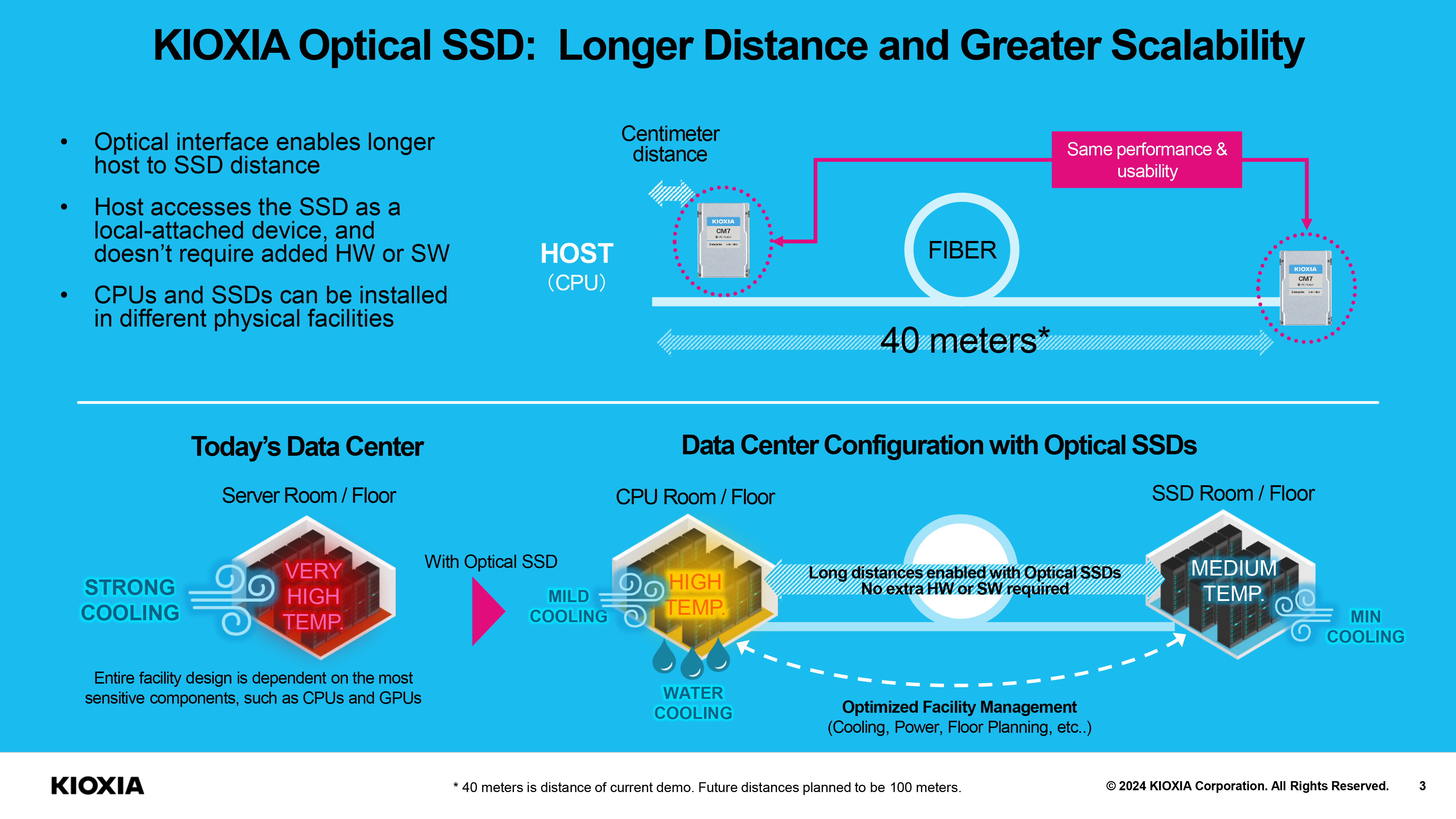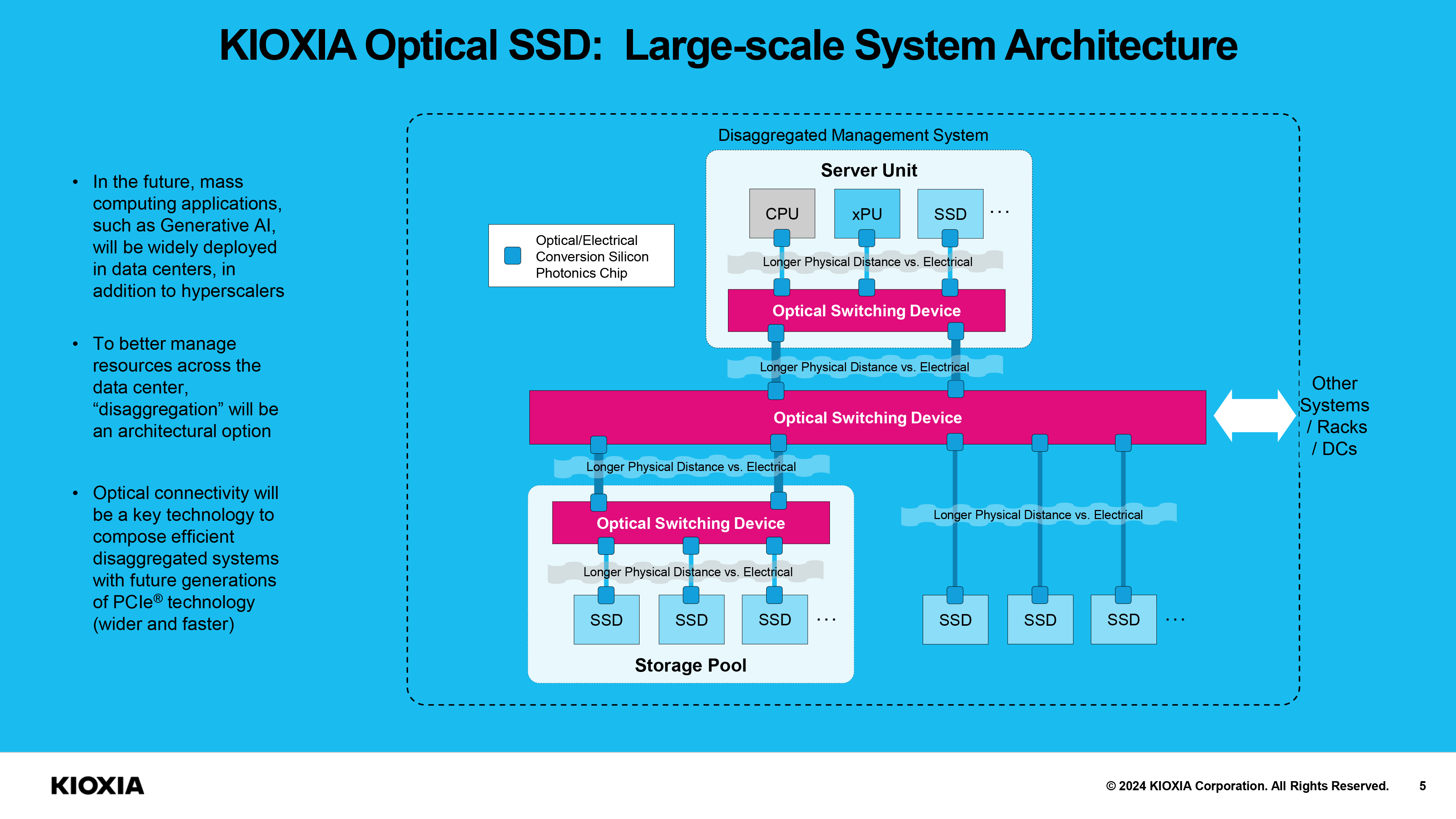Kioxia showcases SSDs that communicate at the speed of light — optical connection enables storage as far as 40 meters or more from CPU
Transfer your data at the speed of light.

Kioxia, one of the leading companies in SSDs, has announced a new Optical Interface SSD for Next-Generation Green Data Centers. This technology replaces the traditional electrical signals transmitted via copper wire with laser and optical data cables, allowing system builders to place storage drives up to 40 meters away from the CPU.
According to Kioxia's presentation, the longer distances between the compute systems, which generate a lot of heat, and the storage pool, which requires minimal cooling, would help data centers optimize their cooling and power requirements. Aside from this, Optical SSDs would require less space owing to their thinner and slimmer connectors compared to current technology. They're also less susceptible to electromagnetic interference, so you don't have to worry about shielding and cable placement.
Aside from these advantages, the optical SSD would allow disaggregation, where large storage pools are located away from the server units and are connected to each other via optical switching devices. This could further improve modularity, allowing data centers and hyperscalers to add more storage without affecting memory latency.



Kioxia also says that future PCIe generations may leverage optical interfaces for SSDs, as these allow for faster and more reliable data transmission. In fact, one company has already shown off an optical solution for PCIe 7.0, which could hit 128 GT/s. These developments would slowly push us away from using electricity and voltage to light to communicate between storage, memory, and compute systems.
Intel has also started working on optical technology for its chips, introducing an optical compute interconnect chiplet delivering 4 Tbps optical connectivity to CPUs or GPUs. And, to tie it all off, TSMC recently detailed its Compact Universal Photonic Engine (CPOUPE), which could enable motherboard-level optical interconnection that can hit up to 6.4 Tbps.
All of these technologies are developed with an eye towards data centers and AI, especially as our increasing demand for computing power is also coupled with the exponential increase in power consumption. By introducing optical interconnects between storage, memory, processors, and all other bits and bobs inside a high-performance PC, we could potentially make it far more power efficient without sacrificing performance.
Get Tom's Hardware's best news and in-depth reviews, straight to your inbox.

Jowi Morales is a tech enthusiast with years of experience working in the industry. He’s been writing with several tech publications since 2021, where he’s been interested in tech hardware and consumer electronics.